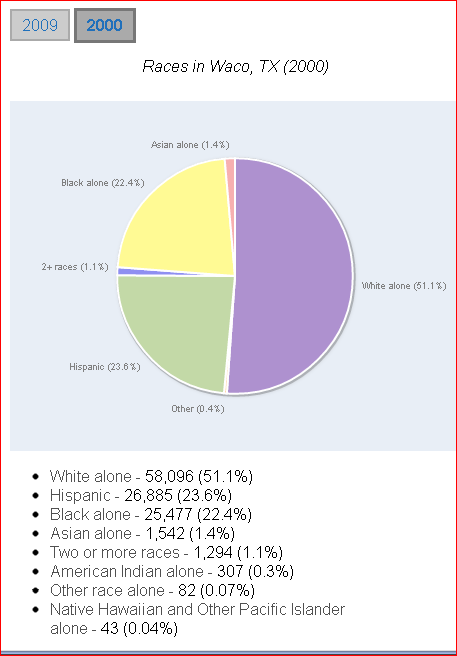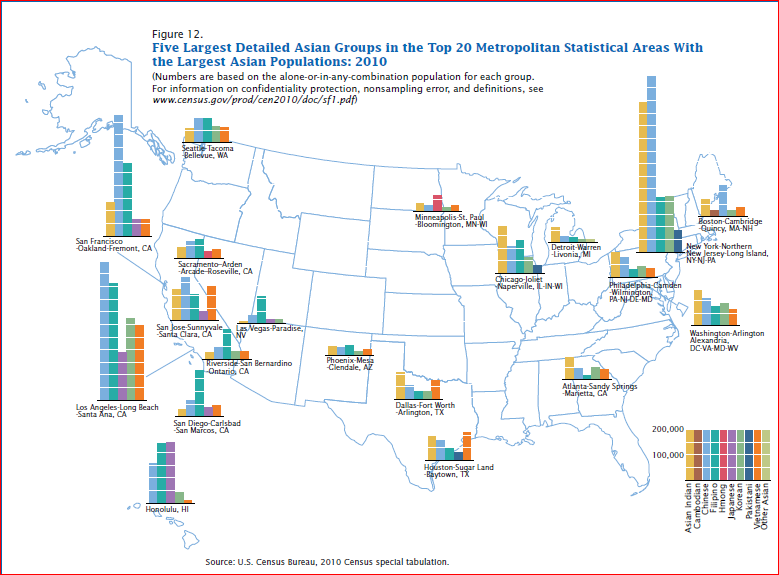I recently had a chance to see the new Avengers movie and one of the characters, Tony Stark mentioned that he had a hankering for shawarma. And that made me think: “Yeah some shawarma would be pretty good. Hmm, I could sure go for some Indian food right now too. Hey when was the last time I had it? Sigh.) You see, I had returned to an old realization. After having lived in Waco, Texas for almost 8 years now, there is still not a single Indian restaurant for over 50 miles in any direction.
I still remember the challenges in adapting to a place that looked largely devoid of Asian Americans. Indeed I wasn’t too far off the mark as the Census data from 2000 showed that about 1.4% of the city was Asian while the national percentage at the time was about 4%. When I left South Bend, IN where I attended graduate school I left one of the least populated Asian American cities (it was 1.2% in 2000, and now 1.3% or about 1,349 people), for a city that had a couple hundred more Asian Americans in the Waco area. Today Waco estimates of the Asian population are around 1.9% or 2330 people.
But if there’s one thing I learned soon enough: Texans love driving. And as it turns out, I was part of one of the biggest shifts in the Texas population over the decade between the two censuses. The Asian population in the US grew from 10.2 million to 14.6 million – this was a much faster growth than any other racially-defined group in the US. Much of this growth was due to more immigration from Asia than childbirth (Asian American family size is about on par with replacement levels). On top of that, new Asian immigrants and longterm Asian Americans (whether born and raised in the US or simply residing in the US for more than a decade) were not staying in the traditional spaces that our popular imagination placed them. Sure, California is king, where over 30% of Asian America is in that state alone. And New York City is still the place to be as having the largest number of Asian Americans of any major city (1 million of the 8.2 million residents of the Big Apple). But remember the L.A riots, and the recession hit the major cities in the Northeast a lot worse than it did in the South. So cities like Houston, TX are climbing their way up the ladder with more Asian Americans there than in my hometown of Philly (126,378 compared to 96,405).
Thus in a couple of months of moving to Waco, I began my education of Asian America in Texas. The Lone Star State is now the third largest state for Asian Americans (964,596). There are sizable communities in Dallas-Fort Worth, Houston and Austin. Remember what I said about loving to drive in Texas? These cities are 100 miles north, 180 miles southeast, and 100 miles south of Waco- one way. It takes more like a weekend to get out to these places (that or I’m getting old). But notably the largest Army base in the US is in Texas as well, and given the sizable presence of the armed forces in Asia, it may not come as a big surprise that there is a large Asian American presence in Killeen Texas, one of the closest cities to that base (My latest Indian restaurant run was there, highly recommend it).
On top of that, I’ve learned too that the ethnic composition of Asian America is quite different from locale to locale. As this map provided by the Census shows, in a city like Houston, the Vietnamese are a larger presence than the Indian population, but in Dallas this dynamic is reversed. Koreans in Houston number less than the Pakistani, but they are much larger in DFW.
So it seems that Asians are still immigrating to the US and Asian Americans are on the move away from some of the traditional cities in favor of cities that seem to be booming. Different Asian American communities are emerging in these new areas. So depending on where you live, “Asian” likely refers to different ethnic group encounters. For you readers, what does “Asian American” mean where you live?














